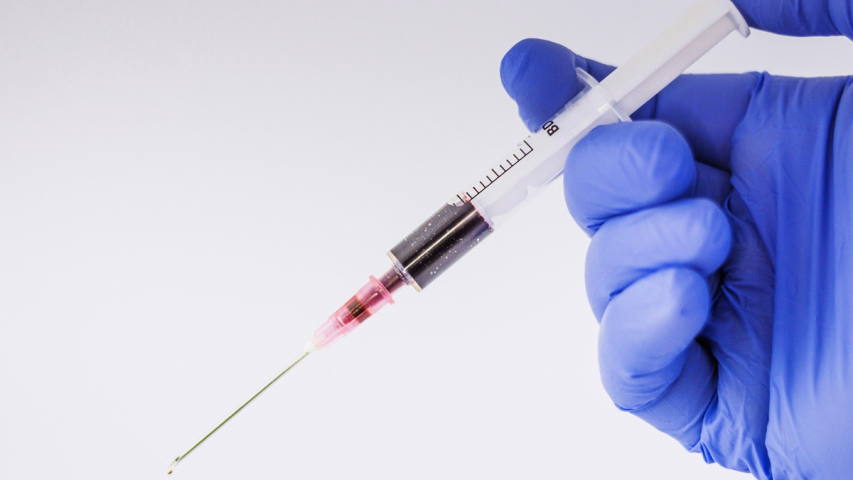- Have any questions? Contact us!
- info@dr-rath-foundation.org

Young Cancer Survivors Face Higher Risk Of Severe Health Problems In Later Life Than General Population
February 20, 2020
Vitamin D Deficiency Linked To Back Pain In Postmenopausal Women
February 27, 2020Mainstream UK Newspaper Publishes Article Suggesting Coronavirus Originated In Laboratory

With the coronavirus outbreak continuing to dominate headlines in the global media, the Daily Mail, a newspaper that has the third highest circulation in the UK, has published an article suggesting that it may have originated in a Chinese government laboratory. Based on the findings of a recent research paper published by scientists from South China University of Technology, the article describes how the virus ‘probably’ came from a laboratory in Wuhan, the city where it was first identified. As thought-provoking as this possibility is, however, the fact that there are a total of 42 drug industry manufacturing facilities concentrated in the Wuhan area, as well as biopharmaceutical firms conducting vaccine research, was notably given no mention in the article.
The research paper summarized by the Daily Mail stresses that it is critical to study where the new coronavirus came from, and how it was passed to humans. In doing so, it cites a recent article in The Lancet medical journal which reports that 27 of 41 infected coronavirus patients examined were found to have had contact with the Huanan Seafood Market in Wuhan. A so-called ‘wet market’ selling live animals, meat and seafood on outdoor stalls, this location is now widely considered to have been the likely starting point for the outbreak.
Noting two facilities in the Wuhan area that were conducting research on bat coronaviruses, the research paper examines the histories of these establishments. Particular attention is paid to the Wuhan Center for Disease Control (WHCDC), a facility that has used bats and other animals for research purposes, including for the collection and identification of pathogens. The paper points out that descriptions of the new coronavirus recently published in the Nature science journal indicate that genome sequences taken from patients were 89.1 percent and 96 percent identical to bat coronaviruses. Just as significant is the fact that the WHCDC is located a mere 280 meters from the seafood market. It is also adjacent to the hospital where the first group of doctors became infected at the start of the epidemic.
The other research facility cited in the paper, the Wuhan National Biosafety Laboratory, is said to be the only lab in China that is designated for the study of highly dangerous pathogens such as Ebola and SARS. Prior to the opening of this laboratory in 2018, biosafety experts and scientists from the United States had expressed concerns that a virus could escape from it.
Follow the money
 While many observers have inevitably jumped to the conclusion that the Chinese government is to blame for the coronavirus epidemic, they fail to make mention of the large number of drug industry manufacturing facilities and biopharmaceutical firms conducting vaccine research in the Wuhan area. Given the state of global panic that now exists over the virus, any company that succeeds in creating a coronavirus vaccine would, as financial and investing advice company The Motley Fool recently pointed out, make billions of dollars of revenue and see investor holdings soar.
While many observers have inevitably jumped to the conclusion that the Chinese government is to blame for the coronavirus epidemic, they fail to make mention of the large number of drug industry manufacturing facilities and biopharmaceutical firms conducting vaccine research in the Wuhan area. Given the state of global panic that now exists over the virus, any company that succeeds in creating a coronavirus vaccine would, as financial and investing advice company The Motley Fool recently pointed out, make billions of dollars of revenue and see investor holdings soar.
In this respect, there is a potential parallel to consider between the outbreak of the new coronavirus and the infamous 1975 outbreak of Lyme disease in the United States. The initial cluster of Lyme disease cases in 1975 occurred in the town of Lyme, Connecticut, and are widely believed to be linked to biological warfare experiments being carried out on nearby Plum Island by the U.S. government at the time. As we have pointed out previously on our website, for anyone assuming that criminal experiments conducted by or on behalf of pharmaceutical, chemical, or other interests ceased after those carried out by Nazi doctors and the German IG Farben Cartel during WWII, the evidence clearly shows this is not the case. During the past century, such experiments have been far more commonplace than most people realize.
While there is much that we don’t yet know about the coronavirus outbreak, it is certainly pertinent to consider who, if anyone, might stand to benefit from it. If the virus did originate in a Wuhan laboratory, it would be naïve to rule out the possibility that it was one with links to the trillion-dollar a year pharmaceutical ‘business with disease’. Any investment industry whose financial growth depends on the maintenance and expansion of diseases will never have an interest in preventing ill health, only in ensuring that it continues to exist. Follow the money, in other words.



